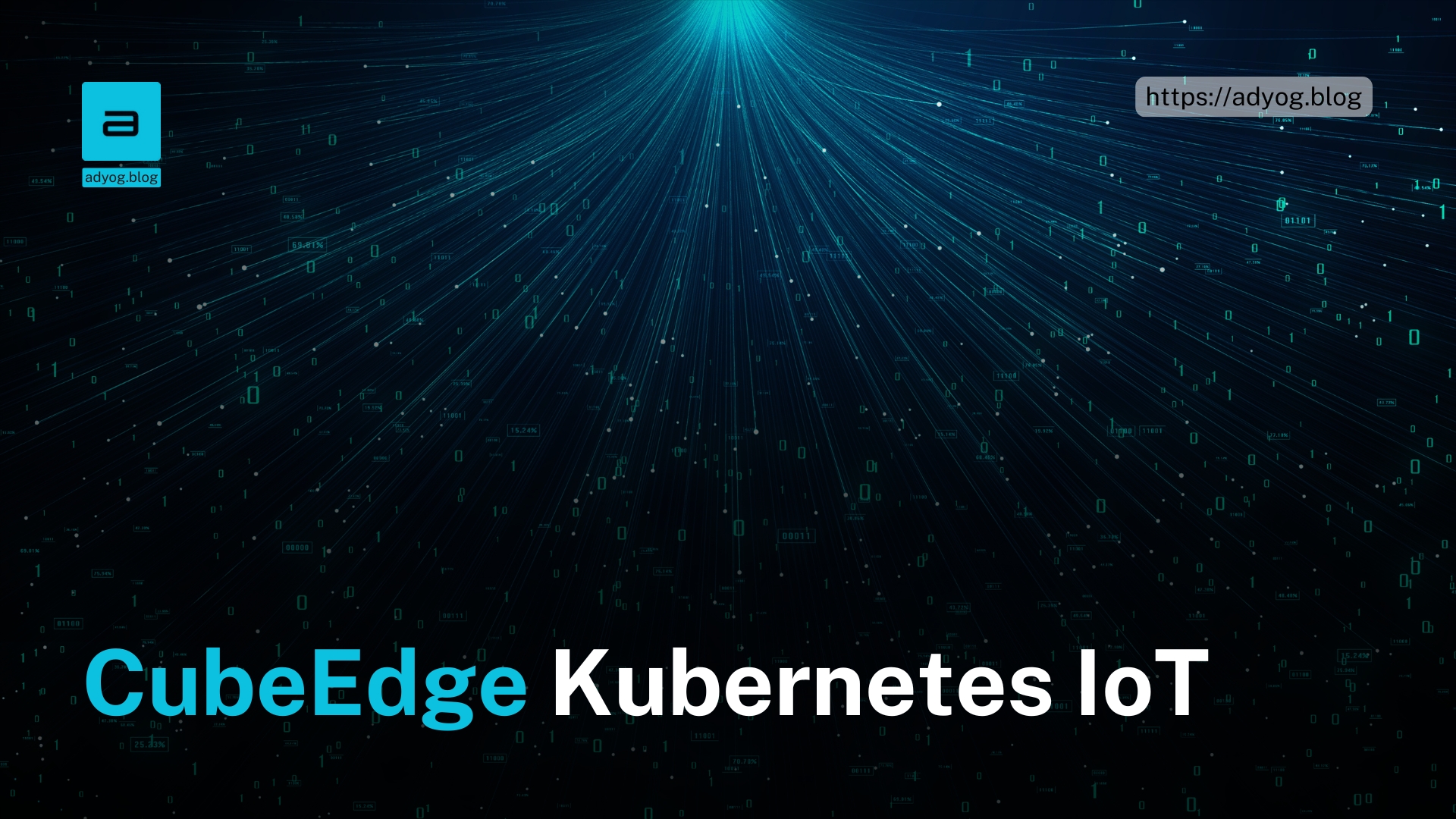As IoT continues to proliferate, managing distributed devices and ensuring seamless communication between the edge and cloud remains a key challenge. CubeEdge, a CNCF-graduated project, bridges this gap by integrating Kubernetes with edge computing environments. It offers robust tools for managing IoT devices at scale, enabling efficient data synchronization, improved latency, and greater resilience.
What is CubeEdge?
CubeEdge is an open-source edge computing framework designed to extend Kubernetes capabilities to the edge. By bridging the operational gap between cloud and edge environments, CubeEdge provides:
- Edge Node Management: Streamlines the deployment and management of Kubernetes clusters on edge nodes.
- Data Synchronization: Ensures seamless bi-directional data flow between edge and cloud environments.
- Offline Operations: Maintains operations during network outages, synchronizing changes once connectivity is restored.
Key components of CubeEdge include:
- CloudCore: Manages edge nodes and acts as the control plane in the cloud.
- EdgeCore: Runs on edge nodes, managing local workloads and facilitating communication with CloudCore.
Benefits of CubeEdge for IoT Device Management
CubeEdge offers distinct advantages for managing IoT devices and workloads:
- Scalability:
- Scales to manage thousands of edge nodes and devices effortlessly.
- Dynamically allocates resources based on workload demands.
- Improved Latency:
- Processes data locally at the edge, reducing latency for time-sensitive applications like autonomous vehicles and industrial automation.
- Enhanced Security:
- Implements robust encryption (e.g., TLS) for secure data transfer.
- Supports fine-grained access control to safeguard sensitive resources.
- Cost Optimization:
- Processes data at the edge, reducing the volume of data transferred to the cloud and cutting bandwidth costs.
- Resilience:
- Enables uninterrupted operations even with intermittent cloud connectivity, synchronizing changes once reconnected.
Use Cases: Realizing the Potential of CubeEdge
CubeEdge is transforming edge computing across industries:
- Industrial IoT:
- Use Case: Predictive maintenance for manufacturing equipment.
- Impact: Localized data processing minimizes downtime and enhances efficiency.
- Smart Cities:
- Use Case: Real-time traffic monitoring and management.
- Impact: Immediate adjustments to traffic lights improve flow and safety.
- Healthcare:
- Use Case: Remote patient monitoring with medical devices.
- Impact: Real-time health insights enable faster response times in critical situations.
- Retail:
- Use Case: In-store analytics for personalized shopping experiences.
- Impact: Offline data processing ensures seamless POS operations.
- Agriculture:
- Use Case: Precision farming with sensor-driven insights.
- Impact: Improved crop yield through localized environmental data analysis.
Data Synchronization with CubeEdge
CubeEdge employs advanced mechanisms for data synchronization, ensuring consistency between the edge and cloud:
- Streaming and Batching: Supports both real-time streaming for critical data and batch synchronization for non-urgent updates.
- Edge Caching: Reduces latency by caching frequently accessed data locally.
- Conflict Resolution: Automatically resolves conflicts when simultaneous updates occur at the edge and cloud.
These capabilities make CubeEdge particularly effective for distributed environments where reliability and efficiency are paramount.
CubeEdge as a CNCF Graduated Project
CubeEdge’s graduation within CNCF highlights its maturity, stability, and widespread adoption:
- Proven Reliability: Successfully deployed in production environments across industries.
- Community Support: Backed by a growing ecosystem of contributors and users.
- Integration: Seamlessly interoperates with Kubernetes-native tools and frameworks, making it easy to adopt.
Competitive Landscape: Why CubeEdge Stands Out
Compared to other edge computing frameworks, CubeEdge excels in:
- Kubernetes-Native Integration: Built to extend Kubernetes’ core features to edge environments.
- Offline Resilience: Offers unmatched reliability during network disruptions.
- Ease of Use: Simplifies complex edge deployments with YAML-based configuration.
The Future of CubeEdge
The roadmap for CubeEdge includes exciting advancements:
- Enhanced AI/ML Capabilities: Native support for AI/ML workloads at the edge.
- Federated Learning: Secure collaboration on machine learning models without centralizing data.
- Expanded Hardware Support: Improved compatibility with diverse IoT devices and edge hardware.
As IoT evolves, CubeEdge will continue to empower organizations with tools to harness edge computing effectively.
Conclusion: CubeEdge’s Transformative Impact
CubeEdge redefines IoT and edge computing by seamlessly integrating Kubernetes into distributed environments. Its robust features, scalability, and security make it an indispensable tool for industries looking to capitalize on edge computing. With its CNCF-graduated status, CubeEdge is poised to lead the charge in enabling the next wave of IoT innovation.





Leave a Reply